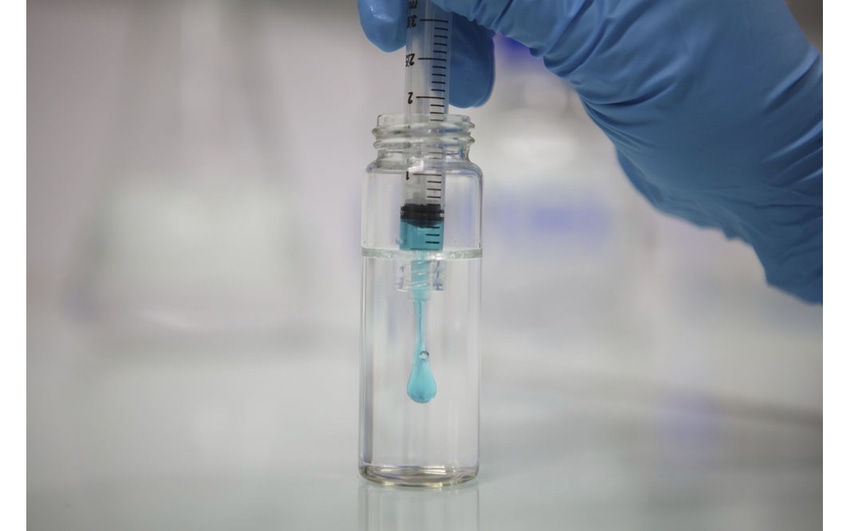New developments in the field of surgical sealants promise ease of use and biocompatibility.
October 12, 2017

Surgeons and clinicians have used surgical sealants for closing or reconnecting ruptured tissues, or as an adjunct to sutures and staples, for years. However, advancements in technology have led general surgeons and specialists to consider sealants for a wider range of applications and with increased frequency.
Increasing Ease of Use
Surgical sealants aren't as easy to use as a tube of Crazy Glue. Surgeons must mix and use some agents precisely and promptly to be effective. Delivery systems vary from a syringe, proprietary applicator, or through an endoscope. Most require special training.
Sylys®, an elastic, resorbable, synthetic sealant developed by Cohera Medical, requires no mixing. The single-part sealant uses a chemistry that produces rapid curing initiated by contact with tissue moisture. Its custom applicator allows surgeons to use the product in either open or laparoscopic procedures.
"We wanted doctors to be doctors, not engineers," said Cohera president and CEO Patrick Daly. "We wanted to create a great product that's easy to use and straightforward to apply."
Cohera designed Sylys to help reduce anastomotic leakage in gastrointestinal surgical procedures. Used in conjunction with sutures or staples, Sylys supports anastomosis during the first few days post-surgery—a time when patients run the highest risk of bowel leakage.
Daly said the sealant, in preclinical studies, reduced leakage by nearly 60 percent. "A bowel leak is bad for the patient and incredibly costly to the health system, with increases in ICU stays and reoperation," he said. "If you can reduce leakage rate, you're doing the right thing for the patient and for the health system." Sylys is currently under clinical investigation in the United States and Europe.
The Rise of Bio-Inspired
Available surgical sealants include fibrin, glutaraldehyde, cyanoacrylate, polyethylene glycol, and polymer blends. All have their limitations, which range from cost (fibrin), to tissue toxicity (cyanoacrylate) and tissue reaction (polyethylene glycol).
To combat these and other limitations, some companies are turning to nature for inspiration. In the Journal of Biomedical Nanotechnology, researcher Tetsushi Taguchi and team reported the development of a surgical sealant by partially modifying the amino groups found in gelatin derived from Alaskan Pollock. The researchers said the sealant showed greater strength than commercial fibrin sealants. They believed the sealant holds promise for cardiovascular and thoracic surgical uses.
A lizard inspired Gecko Biomedical's Setalum™, a sealant that's biocompatible, biodegradable, bioresorbable, light activated on demand, and adhesive even when wet. Setalum recently received CE Mark approval.
Initially developed at MIT, Harvard Medical School, and Brigham and Women’s Hospital, bioengineer Jeffrey Karp conceived what would later become Setalum by mimicking properties of gecko feet—on them, tiny, hair-like pillars allow the gecko to easily stick to and detach from surfaces. The Gecko Biomedical team translated those features into a product that could be used inside the body.
Although Gecko Biomedical designed Setalum to be used in conjunction with sutures during vascular surgery, founder and CEO Christophe Bancel said the polymer has broader potential. "The sealant is based on our proprietary polymer that can be used in different settings, depending on the makeup of the polymer, the delivery device, and how the polymer is activated," he said. "In some cases, the polymer could also be used as a barrier or a scaffold. Different setups allow us to provide the right support for tissue reconstruction."
Alexander Schüller, president and cofounder of Adhesys, said that while most sealants are biodegradable to some degree, companies have struggled to develop sealants that are both biodegradable and strong. Adhesys's VIVO is a fully synthetic biodegradable surgical sealant designed to stop bleeding, seal wounds, and reinforce suture lines inside the body.
"The challenge was to imbue a polyurethane-based glue with bio-like properties while maintaining the swiftness and effectiveness of the seal, even in a wet environment," he said. "A complex set of variables is at play when synthesizing a glue of this kind, which meant at the outset there was an almost infinite number of possible approaches; few, however, could fulfill the functions we wanted to maximize: safety and effectiveness."
Schüller said Adhesys has had its first FDA discussions regarding VIVO, a Class III product, and has successfully conducted long-term animal models.
Sealing the Future
As with most medical devices, developing new polymers requires a large investment in time and money, according to Wil Boren, president of advanced surgery at Baxter International. Baxter offers Coseal, a sealant indicated for use in vascular reconstructions to achieve adjunctive hemostasis by mechanically sealing areas of leakage. "Researchers also need to be mindful of the practicality of new technologies and how a surgeon would use the product during a surgery," he said.
Schüller foresees an increase in demand for bio-derived products that provide temporary support. "Technology wise, highest degrees of biocompatibility and biodegradability will become key selection criteria for surgeons," he said.
That some sealants have the potential to reduce complications and readmissions, such as colon resection procedures using Cohera's Sylys, indicates potential for more widespread use. "Surgeons and hospitals need products that will improve patient outcomes, are convenient to use, and are cost-effective," said Boren.
"The clinical practice can benefit greatly from expanded use," said Schüller. "Adhesys and our competitors share a common interest: changing surgeons’ attitude towards and usage behavior of surgical hemostats and sealants."
About the Author(s)
You May Also Like




